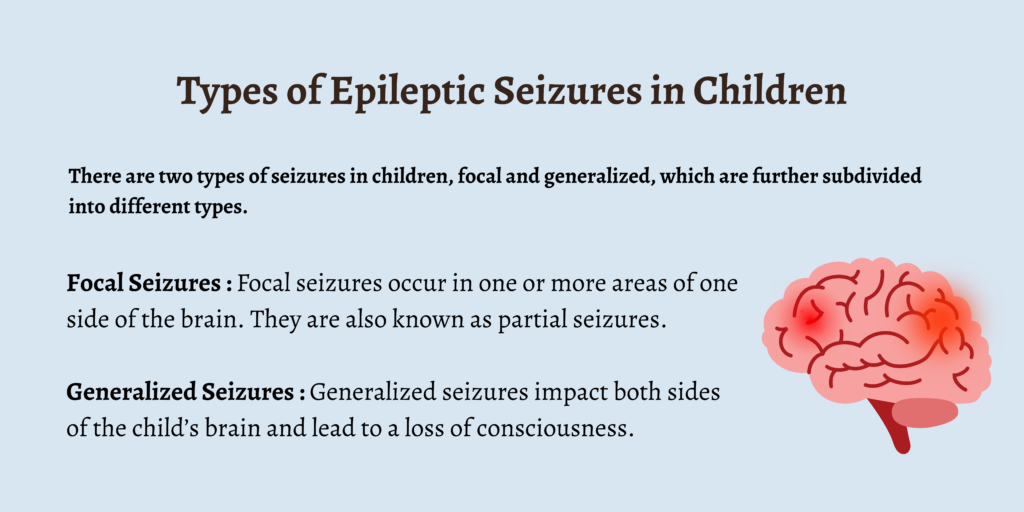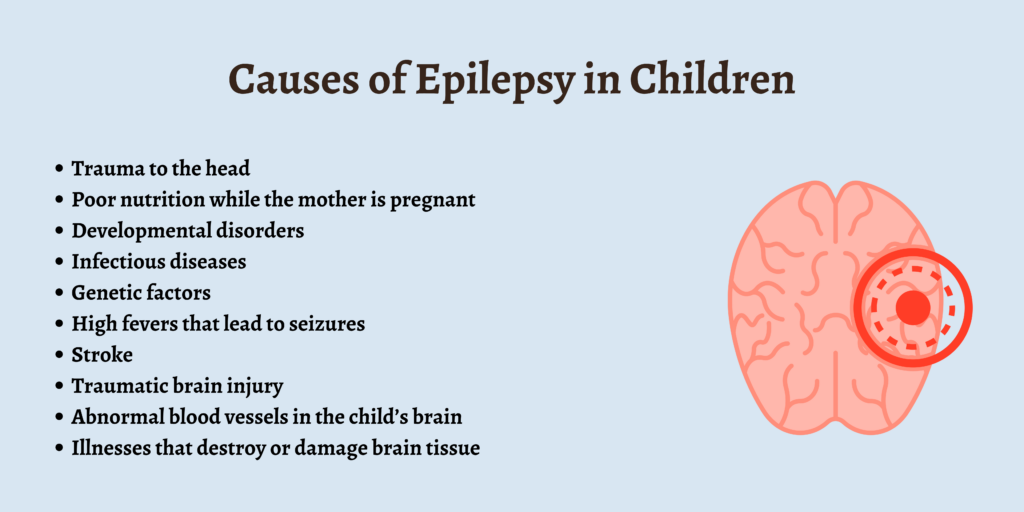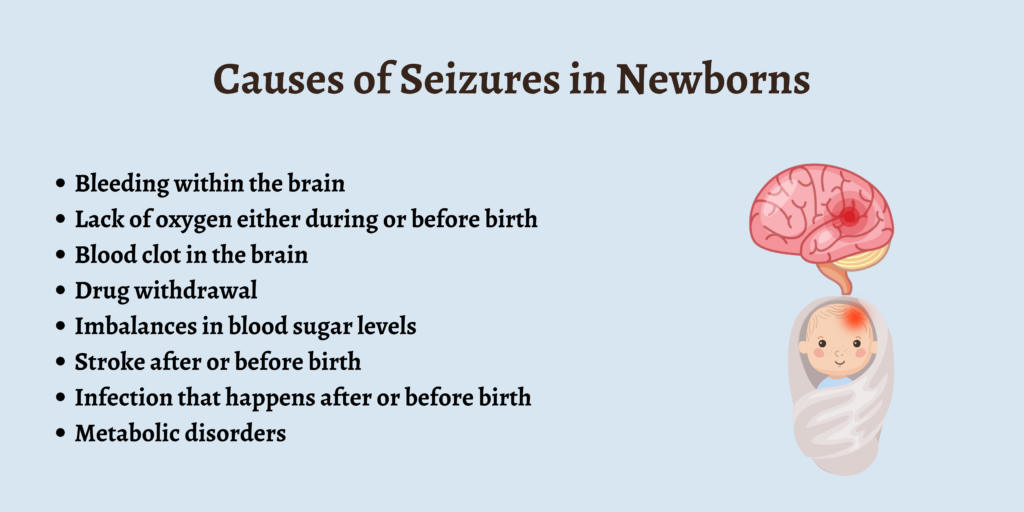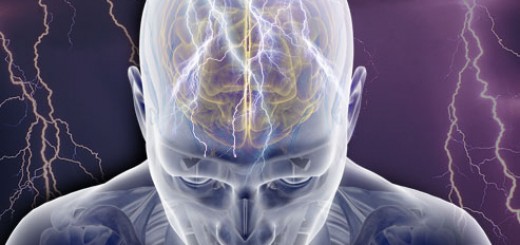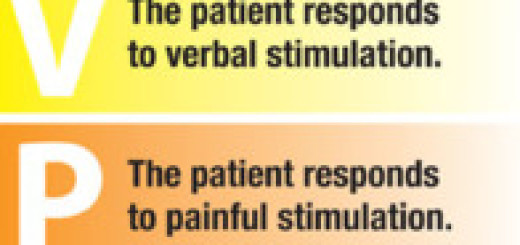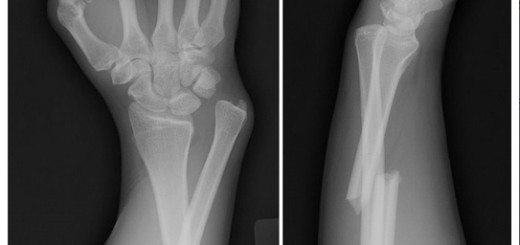Epilepsy in Children
Epilepsy is a brain condition that causes a person to experience recurring seizures. Although it can begin at any point during a person’s life, the diagnosis commonly happens in children or older citizens aged 65 and above.
While some kids stop having seizures as they grow up, others experience them during their adulthood as well. The condition of epilepsy varies from person to person, and medicines allow some children to have an active and normal childhood, even with epilepsy. Parents should carefully monitor a child’s symptoms so that they can be diagnosed and given the necessary treatment in case they have epilepsy. In this article, we will be discussing the types of epilepsy in children, the causes, and much more.
Types of Epileptic Seizures in Childrenaaaaaa
There are two types of seizures in children, focal and generalized, which are further subdivided into different types.
Focal Seizures
Focal seizures occur in one or more areas of one side of the brain. They are also known as partial seizures. Before the seizure occurs, a child might experience an aura, and this could include euphoria, fear, or déjà vu. They could also witness changes in smell, vision, or hearing.
The two types of focal seizures are:
- Simple focal seizures: A child’s muscles get affected in such types of seizures, such as large muscles in the legs and arms or fingers. They don’t become unconscious but experience nausea, sweating, and their skin becoming pale.
- Complex focal seizures: Complex focal seizures take place in the region of the brain that controls memory and emotions. Such seizures last for a minute or two, and a child usually loses consciousness with this category of seizures. At times they can become unaware of what’s happening around them.
Generalized Seizures
Generalized seizures impact both sides of the child’s brain and lead to a loss of consciousness. The following are the various kinds of generalized seizures:
- Absence seizures: Also known as petit mal seizures, a child loses consciousness briefly with these seizures. It’s usually characterized by the child blinking their eyes rapidly or their face or mouth twitching. These seizures don’t often last for over 30 seconds.
- Atonic seizures: A loss of sudden muscle tone signifies that the child is experiencing an atonic seizure. They could either become limp, fall down, or stop responding. Such seizures last only 15 seconds or less.
- Myoclonic seizures: When there’s a sudden jerking movement in the muscles of a child, it’s known as a myoclonic seizure. Lasting for about one to two seconds, these can occur numerous times a day or for multiple days in a row.
Generalized tonic-clonic seizures (GTC): Generalized tonic-clonic seizures are also known as grand mal seizures. These have phases, wherein there is firstly a contraction of the child’s limbs and body, followed by the body and limbs straightening, and then the phase where the child begins to shake. The final stage involves the child being confused and tired.
Causes of Epilepsy in Children
The causes of epilepsy in children are listed below:
- Trauma to the head
- Poor nutrition while the mother is pregnant
- Developmental disorders
- Infectious diseases
- Genetic factors
- High fevers that lead to seizures
- Stroke
- Traumatic brain injury
- Abnormal blood vessels in the child’s brain
- Illnesses that destroy or damage brain tissue
Recognizing Epilepsy in Children
The way to recognize epilepsy in children is by being aware of the signs and symptoms involved. The symptoms of epilepsy in children are as follows:
- Loss of consciousness
- Displaying jerking movements in the legs and arms
- Loss of control due to bowel movements or urination
- Not responding to words or noises for small periods
- Appearing to be confused or staring into space
- The body getting stiff
- Blinking the eyes rapidly
- Sudden falls especially, with regard to loss of consciousness
- Breathing issues
- Nodding the head owing to reduction in awareness
Febrile Convulsions
Febrile convulsions are seizures that occur due to fever when a child is unwell. Children aged between six months to six years are the ones who mainly experience these seizures.
However, neither do febrile convulsions indicate that the child has epilepsy, nor does their risk of developing epilepsy increase due to these seizures. A complex febrile convulsion refers to:
- A convulsion lasting for over 15 minutes.
- A convulsion that happens more than once during a span of 24 hours.
- A convulsion that involves either a side of the body or a part of the body.
Causes of Seizures in Newborns
The causes of seizures in newborns are as follows:
- Bleeding within the brain
- Lack of oxygen either during or before birth
- Blood clot in the brain
- Drug withdrawal
- Imbalances in blood sugar levels
- Stroke after or before birth
- Infection that happens after or before birth
- Metabolic disorders
Diagnosis of Seizures in Newborns
The diagnosis of seizures in newborns involves a test known as an electroencephalogram (EEG) which records the brain’s electrical activity. Other tests that can help with such a diagnosis are CT scans and MRI scans.
Talking to Kids About Epilepsy
The following are some of the pointers to remember when it comes to talking about epilepsy to your child:
- Have honest and open discussions about the condition and the possibility of them having it or developing it.
- Don’t keep them in the dark, or else they may not come to you for important discussions in the future.
- Talk about the topic with them by using simple terms and not medical jargon.
- If there is something you are unsure about, look up the information first before discussing it with them.
- Give them the comfort needed to ask the important questions and make useful resources available to them.
- Reassure them that this is just a small part of their life, and they can still go about their daily activities with this condition.
Treatment of Epilepsy
In the majority of cases, children’s seizures can be satisfactorily controlled or reduced in frequency with drug therapy. The success of the therapy depends chiefly on the severity of the seizure disorder, as well as on the child’s compliance in taking his medication, and on careful monitoring of blood levels by the physician.
One or more of about six different agents, called antiepileptic drugs, are generally prescribed for the treatment of epilepsy in children. Each of the drugs is useful in specific types of seizure disorders, and each has different dosage requirements and side effects that the physician takes into consideration before deciding which one to prescribe. In many cases, finding the proper medication and correct dosage level takes some time. Recent developments in specific types of brain surgery for intractable seizures offer new hope for very severe cases of epilepsy.
How Long Does a Child Need to Take Medication for Epilepsy?
If a child has been consuming medicines for seizures and they haven’t had an episode in a few years, they could stop taking it. However, they shouldn’t stop taking their medicines unless it is recommended by the doctor.
It’s only through close supervision by a medical professional that they could stop taking their medicines for seizures.
Looking After a Child With Epilepsy
A child who has a seizure disorder should be treated the same way you would treat any other child. Certain precautions should be taken while the threat of seizures exists.
- Make sure the child is well supervised in the bathtub, and at the beach or swimming pools.
- Teach the child to recognize the signs of an impending seizure and seek help.
- Have the child wear a MedicAlert bracelet that identifies his condition.
- Most important, be sure the child continues to take medication at the prescribed doses, even after seizures are under control. The doctor may recommend tapering off the medication after the child has been free of seizures for two or three years, but close medical supervision is needed for this process.
Epilepsy And Genetics
Certain types of epilepsy could run in families. The possibility of passing on the condition of epilepsy if a family does have it in their genetics is quite low. Here are a few things to remember about the connection between genetics and epilepsy:
- There is only a slightly higher risk of a child developing epilepsy if their father has the condition.
- If the child’s father doesn’t have epilepsy, but their mother does, the risk is less than 5 in 100.
- The risk is slightly higher if both parents have epilepsy.
- Talk to a doctor or genetic counselor if you’re thinking of having a baby and are worried about the risks associated with epilepsy.
FAQs
1. Can genetics lead to epilepsy?
Yes, genetics can lead to epilepsy, but the risks are not applicable to all types of epilepsy.
2. Is the risk of epilepsy higher if both parents have it?
Yes, the chances of a child having epilepsy is higher if both parents have the condition.
3. What are the signs of epilepsy?
The signs of epilepsy include breathing issues, loss of consciousness, and sudden falls.
4. How do you talk about epilepsy with children?
While talking about epilepsy with your kids, always be honest, make the required resources available to them, and reassure them that everything will be fine.
5. How are seizures diagnosed in newborns?
Seizures are diagnosed in newborns through CT scans, MRI scans, and an electroencephalogram.
Conclusion
Make sure to call the emergency medical services if your child experiences seizures for the first time. In case they have had them before, call your healthcare provider if:
- The child is facing breathing issues.
- The child experiences repeated seizures for a couple of minutes.
- The child faces an injury while having a seizure.
- The seizure lasts longer than usual.
- Normal behavior or consciousness isn’t regained in between repeated seizures.
Epilepsy can be a lifelong condition for many children, and medicines must be continued in such cases. When epilepsy is accompanied by developmental disorders, it can be even more challenging for a child to deal with.
Therefore, parents should keep themselves updated regarding the condition so that they know when to contact their healthcare provider and look after their child in the best possible manner.

